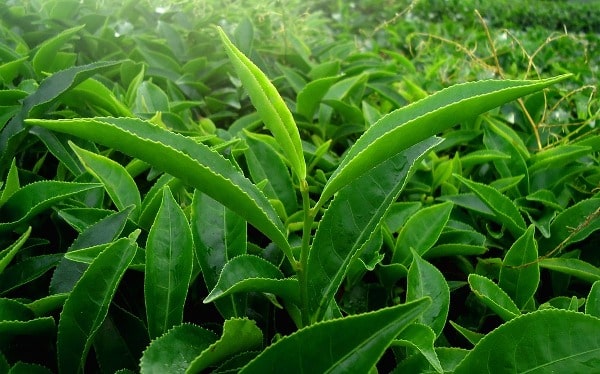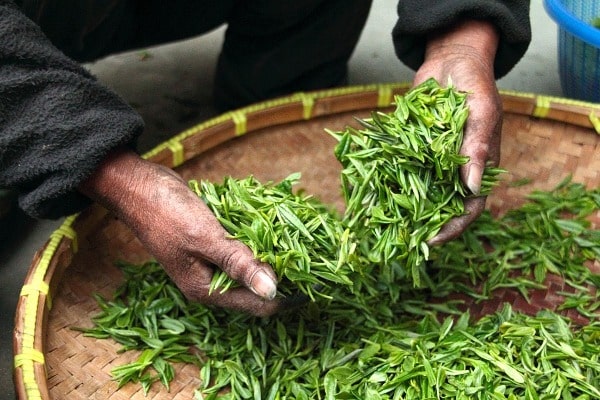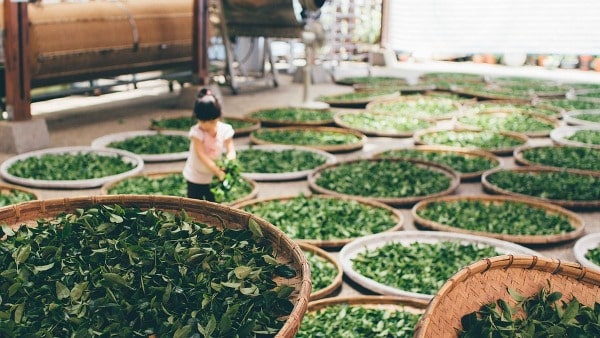Introduction to Tea Powder Making Process From Green Tea Leaves
Today, we are going to discuss Tea Powder Making Process and extraction methods from green tea leaves.
Tea is a very popular daily beverage worldwide. The scientific name of the tea is Camellia sinensis. Extraction is a process used for the separation of an organic compound from a mixture of compounds. This method selectively dissolves one or more compounds in an appropriate solvent. The category of tea is distinguished by the processing they undergo. In its most general form, tea processing involves special manners and degree of oxidation of the leaves, stopping the oxidation, forming the tea & drying it.
The innate flavor of the dried tea leaves is resolute by the type of cultivar of the tea bush, the quality of the plucked tea leaves, and the manner and quality of the making processing they undergo. After processing, a tea may be blended with other teas or mixed with flavorings to alter the flavor of the final tea.
Classification of Tea:
Based on different types of processing techniques, tea can be classified into many types. They are:
- Green Tea or Unfermented Tea
- Matcha Tea
- Yellow Tea
- Oolong Tea or Semi-fermented Tea
- Instant Tea
- Black Tea or Fermented Tea
Green Tea:
A brew made from green tea is related to the one prepared from dried tea leaves in taste and composition. In the manufacture of Green tea, 3 principal operations are involved – pan fires or steaming, rolling & drying. The purpose is to destroy the enzymes in the tea leaf as soon as it is plucked, thus preventing fermentation altogether.
Matcha Tea:
A distinct green tea, this non-oxidized tea is unique because it is prepared with the whole tea leaf ground into a powder. This powder is then used to make a delicate & antioxidant-rich tea.
Yellow Tea:
Yellow tea is made in a related way as green tea, but the leaves are dried slower, allowing the damp leaves to yellow (instead of staying green). The tea leaves will be yellow-green in color, and it has its own unique taste & aroma.
Oolong Tea:
Also made with the leaves of Camellia sinensis (Tea), the Oolong tea method starts with them withering under the sun. The oxidizing stage is for a shorter time frame compared to the black tea, as it is stopped once the leaves give off a fruity fragrance (though note that the rate of oxidation in Oolong teas differs greatly on the variety). The leaves are then rolled & fired. Normally, there is a lower amount of caffeine per cup about 30 milligrams. One method to think of Oolong tea is halfway between green tea and black.
Instant Tea:
The essential objective in the manufacture of instant tea is to extract the water-soluble solids from a pure tea brew and change them into a powdery form. The brew can be prepared from black tea, or from partly procedure green leaves. This technique has been patented by Tocklai Tea Experimental Station, Jorhat (Assam).
Black Tea:
The essential objective of black tea making is to condition green leaf for fermentation, & when that has been achieved, arrest the fermenting process through the application of heat. Thus heat is to be applied at a much later step than that of green tea manufacture. Due to the heavy requirements of black tea, most of the tea estates are concentrating their production of black tea only. Black tea can be subdivided into:
- Orthodox Tea
- CTC Tea
All the big tea estates of Assam have facilities for making of both the Orthodox and CTC tea. But nowadays, as the demand for Orthodox tea are poor, whereas its production cost comparatively higher, hence tea estates focus on CTC tea manufacturing.
The extraction process of Tea Powder/Tea Powder Making Process:
Cultivation and Harvesting:

Camellia sinensis is an evergreen plant that grows mostly in tropical and subtropical climates. Some varieties tolerate marine climates & are cultivated as far north as Cornwall in England, Perthshire in Scotland, Washington State in the United States, & Vancouver Island in Canada. In the Southern Hemisphere, tea is developed as far south as Hobart on the Australian island of Tasmania and Waikato in New Zealand.
Tea plants are propagated from seed & cuttings; about four to twelve years are needed for a plant to bear seed and about three years before a new plant is ready for harvesting. In addition to a zone 8 climate or warmer, tea plants need at least 127 cm (50 in) of rainfall a year & prefer acidic soils. Several high-quality tea plants are cultivated at elevations of up to 1,500 m (4,900 ft) above sea level. Though at these heights the plants develop more slowly, they acquire a better flavor.
A tea plant will develop into a tree of up to 16 m (52 ft) if left undisturbed, but cultivated plants are normally pruned to waist height for ease of plucking. Also, the short plants bear more new shoots which give new and tender leaves and increase the quality of the tea.
Read: Tea Farming Project Report.
Components of Tea Leaves:
Cellulose – the main structural material of all plants
Caffeine – one of the main water-soluble substances present in tea leaves
Tannins – high molecular weight, water-soluble compounds that are dependable for the color of tea
Flavonoid pigments – a logically occurring water-soluble phenolic compound belonging to a large group that includes many plant pigments
Chlorophyll – the green pigment in plants that captures the light energy need for photosynthesis
Plucking of Tea Leaves:
Plucking is the procedure of collecting tea leaves from the bushes. The plucked leaves are transported to the plant for processing. Two standards of plucking are usually followed in tea gardens: fine & coarse plucking. This kind of plucking results in a better quality of tea after processing. So, in the majority of the tea gardens, fme plucking is adopted when excellence tea is to be produced. But when the command for tea in the market increases, gardens cannot meet the demand by adopting fine plucking only. In such a case, plucking is carried out irrespective of freshness & age of the leaf. This kind of plucking is termed as coarse plucking.
In the tea gardens of Assam Pluckers pluck the tea leaves & put it in a basket made of bamboo. The pluckers take the baskets on their shoulders. The plucked leaves, when the basket is full, are reserved on leaf carriers. The leaves are then approved to the factory for processing.

Pruning of Tea Plants:
Quantity and value of the crop in a tea estate depend largely on pruning practices. Pruning is the procedure of removal of the top congestion of the bushes by the removal of dead, diseased & unproductive branches at a certain interval. This interval is identified as a pruning interval. Pruning arrests unproductive growth and stimulates vegetative growth. Tea gardens of Assam, three to four year period is followed.
Thus, the major objectives of pruning are:
- To verify reproductive growth and provide stimulus for vegetative growth, especially for the production of young shoots that constitute the crop.
- To remove the dead or unproductive wood & renew the actively growing branches which can support a sufficient volume of maintenance foliage on it.
Pruning is generally done after every three to four years at 3 to 4 cm above the previous pruning mark: it is usually described as Light Prune (L. P.). But when the bush frame grows more & plucking becomes difficult, it is brought down to optimum height by Medium Prune (M.P.) at 50 to 70 cm above the ground.
Withering:
The first processing step after the leaves are harvested is a basic one. Since Camellia sinensis leaves are thick & waxy on the plant, they must be softened or withered, to create them pliable for crafting.
The leaves are laid out on the fabric or bamboo mats, & left to wilt. Modern tea farmers manage the variables in this process with great precision. Humidity and temperature are monitored & controlled, and racks of leaves are carefully rotated to make sure each layer receives proper airflow.
Though this step sounds like oxidation, it is a required procedure for even white & green teas. The withering procedure reduces the water content of the leaves by as much as half. Without withering, subsequent heating steps would create something akin to cooked vegetables, rather than dried tea leaves.
Disruption:
The Western tea production as “disruption” or “leaf maceration”, the teas are bruised or torn in order to promote & quicken oxidation. The leaves may be lightly bruised on their edges by shaking & tossing in a bamboo tray or tumbling in baskets. More extensive leaf disruption can be done by kneading, rolling, tearing, and crushing, generally by machinery. The bruising breaks down the structures inside and outside of the leaf cells & allows from the co-mingling of oxidative enzymes with different substrates, which allows for the beginning of oxidation. This releases some of the leaf juices, which may aid in oxidation and change the taste profile of the tea.
Oxidation:
For teas that need oxidation, the leaves are left on their own in a climate-controlled room where they turn progressively darker. In this procedure, the chlorophyll in the leaves is enzymatically broken down, & its tannins are released or transformed. The tea maker may decide when the oxidation should be stopped, which depends on the preferred qualities in the final tea as well as the weather conditions. For light Oolong teas this may be anywhere from 5 to 40% oxidation, in darker Oolong teas 60 to 70%, & in black teas 100% oxidation. Oxidation is essential in the development of many taste & aroma contents, which give a tea its liquor color, strength, and briskness. Depending on the kind of tea desired, under or over-oxidation can result in grassy flavors or overly thick winey flavors. This procedure is sometimes referred to erroneously as “fermentation” in the tea industry.
Rolling:
Rolling absorbs shaping the processed leaves into a tight form. As a part of this procedure, wilted or fixed leaves are gently rolling, & depending on the style, they are shaped to look wiry, kneaded, or as strongly rolled pellets. During the rolling, essential oils & sap tend to ooze out of the leaves, intensifying the taste further. The more strongly rolled the leaves, the longer they will retain their freshness.
Drying:
In order to stay the tea moisture-free, they are dried at various stages of production. Drying enhances a tea flavor & ensures its long shelf-life. Also, drying brings down the tea’s moisture content to less than one percent. To dry the leaves, they are fired or roasted at a low temperature for a controlled stage of time, normally in an industrial scale oven. If the leaves are dried too quickly, the tea can turn abrasive & taste harsh.
Aging or Curing:
While not always required, some teas necessary additional aging, fermentation, or baking to attain their drinking potential. For instance, a green tea puerh, prior to curing into a post-fermented tea, is often bitter & harsh in taste but becomes sweet and mellow through fermentation with age or dampness. Also, Oolong can benefit from aging if fired over charcoal. Flavored teas are manufactured in this period by spraying the tea with aromas and flavors or by storing them with their flavourants.
Read: Almond Oil Extraction Method.
The Technology of Tea Drying:
When a particle is surrounded by moisture molecules in its surface, the removal of this moisture is moderately easy and the evaporation rate is independent of the properties of the particles. This rate of evaporation is governed by the mass flow rate & drying potential of air only. In the drying procedure, this stage is known as ‘ Constant Rate Period’ of drying.
With the removal of freely obtainable water from the surface of the solid particle, a phase is reached where some portions of the particle surface would be devoid of any moisture molecules & the balance would still have some. The rate of drying of such particles will continuously decrease & drying will become increasingly more difficult.
Once the surface drying is complete, diffusion processes, manage the drying rates. Those moisture molecules entrapped inside the particles have to come out to the surface either in liquid or in vapour form previous to leaving the tea granule. As the moisture stage of the particles decreases, the concentration gradient decreases to reducing the rate of drying. This period of drying is called as the ‘ Falling Rate Period’ of drying. The critical moisture satisfied, at which the rate of drying slows down depends on the size and shape of the solid particles and their texture.
Early types of dryers were simple batch types, in which the leaf was spread on a perforated mesh or tray & heated air blown through until the tea was dried. A semi continuous scheme employing a series of trays mounted horizontally on a vertical stack was constructed. Sequential mechanical tripping was working to drop the contents of each tray at selected intervals into the tray immediately below. Hot air was fed from below & the dried tea eventually emerged at the lowest point. These dryers called as Venetian dryers are not in use now-a-days.
The modem machine consists of 2 or 3 endless chains where perforated trays are mounted. In the present plan the drier is situated on the pressure side of the fan, but in the earlier versions, the fans sucked air through the drier. Fermented leaf is falling on the top tray of the drier by a conveyer. The leaf particles Tea dryer falling on the perforated tray is taken during the drier by the moving trap. At the end of each tray stage, the leaf is dropped into the tray immediately below. Hot air is sent from the bottom of the drier & is made to flow up through the perforations. The arrangement ensures progressively higher temperature through the course of drying and the air is made to come in contact with the increasingly moist leaf particles.
A tea drier consists of the dryer unit, the air heater & the fan. The hot air is given by a furnace to which are connected the heat exchangers. An induced lack is maintained by the fan. The fermented tea particles, when ready for drying, are frequently fed into a hopper with an automatic spreader. Thickness of spread, the peed of trays & the volume of air flow during the trays is regulated as desired. As is clear from the plan at each stage of drying, the leaf is subjected to a different temperature. The exhaust temperature should be such that the fermentation procedure is brought to a stop immediately after the leaf has entered to the top tray of the dryer. However, in actual practice, the fermentation, which is enzymic in nature, continues for a few times in the dryer.
Tea growing countries:

Tea is mostly grown in Asia, Africa, South America, and around the Black & Caspian Seas. The four biggest tea-producing countries today are China, India, Sri Lanka & Kenya.
The world’s top ten teas producing nations: in tones
- China – 2,473,443 tones
- India – 1,325,050 tones
- Kenya – 439,857 tones
- Sri Lanka – 349,699 tones
- Vietnam – 260,000 tones
- Turkey – 234,000 tones
- Indonesia – 139,362 tones
- Myanmar – 104,743 tones
- Iran – 100,580 tones
- Bangladesh – 81,850 tones
Health Benefits of Tea:
Tea contains antioxidants:
Antioxidants work to prevent the body’s version of rust & thus help to keep us young and protect us from damage from pollution. Load up on antioxidants with a white tea, which is less processed than black tea or green tea so it retains more beneficial antioxidants.
Tea can reduce stomach cramps:
Properties of red tea cause it to act as an anti-spasmodic agent & allowing it to aid in the relief of stomach cramps or even colic in infants.
Tea is calorie-free:
Tea has no calories unless choose to add sweeteners or milk, making it a satisfying, low-cal way to wake up and maybe even shed a few pounds.
Tea can prevent iron damage:
Suffering from iron disorders like haemochromatosis may be helped by drinking tea, which contains tannins that limit the quantity of iron the body can absorb.
Tea may help protect your bones:
Data from recent animal studies has shown that green tea may stop bone loss. Moringa, a plant that’s native to South Asia, has been identified for its medicinal properties and is now quickly becoming a mainstream super food. With extra calcium than milk, as well as iron, vitamin A and vitamin K. Moringa tea is a great addition to help keep those bones strong.
Tea can lower blood sugar:
Tea contains catechin & polysaccharides, which have been demonstrated to have a noticeable result of lowering blood sugar.
Read: Coffee Cultivation Information.